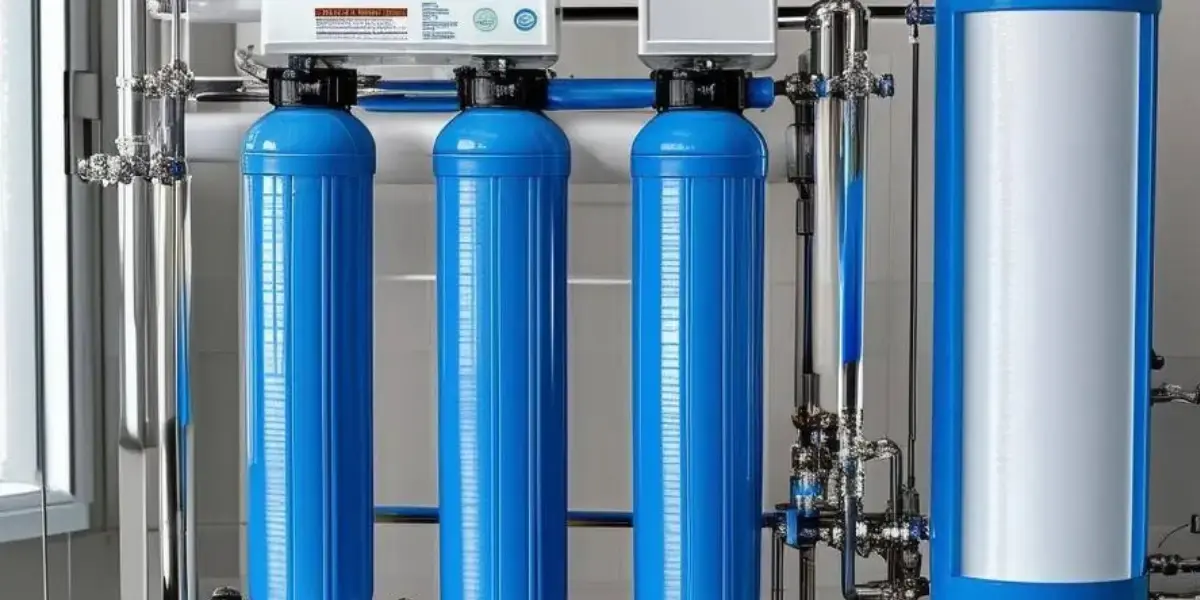What you need to know about Legionella: symptoms, treatment & recovery
Editors note: This blog post was first published in July 2019 and has been updated with additional information.
Legionnaires’ disease is a serious and potentially fatal disease. We explore what it is, what causes it, the symptoms, how it’s treated, and what recovery looks like. We also explore Legionella prevention methods and legal requirements for employers (or building owners/operators) for protecting staff and visitors against Legionnaires’ disease.
What is Legionnaires’ disease?
Legionnaires' disease is an extreme form of pneumonia caused by Legionella bacteria.
What causes Legionnaires’ disease?
People can become infected with Legionnaires’ disease by inhaling water droplets containing the bacteria Legionella.
Legionella bacteria can grow in hot and cold water systems, air conditioning systems, humidifiers, cooling towers, and spa pools. It thrives in the following conditions:
- when water temperatures are between 20-45°C
- where nutrients, such as rust, sludge, scale, sediment and algae are available
- where water is stagnant in the water system (eg, if a shower or tap is not regularly used)
It is rare to find Legionella bacteria in the home, where water turnover is generally good. It is most likely to be found in hotels, hospitals and offices where the bacteria have got into the water supply and been given the opportunity to grow. If it gets into the water supply, people may become infected from the spray from a shower, tap or from a process where water is heated and sprayed, for example. Although the bacteria can be present in ponds, lakes and rivers, these are not likely sources of infection.
How common is Legionnaires’ disease?
On average, there are approximately 200-250 reported confirmed cases of Legionnaires’ disease each year in England and Wales, according to the Health and Safety Executive (HSE). However, the actual number of cases is believed to be much higher.
One of the most well-known outbreaks of Legionnaires’ disease in the UK was in 2002 at a public leisure centre in Cumbria. Seven people died and 180 people became ill after Legionella bacteria was spread through aerosols in a poorly maintained air conditioning unit. The incident has served as an advert for future Legionella prevention.
Is Legionnaires’ disease contagious?
Because you have to inhale water droplets in order to catch the disease, it is generally not contagious, and it is usually safe to be around people with the disease.
What are the risk factors?
There are a few risk factors that make you more susceptible to the disease, the most prevalent being smoking, or chronic lung disease. People with organ transplants are also at higher risk and anyone who is taking corticosteroid medicines. Men are around three times more likely to contract the disease than women.
Who is vulnerable to Legionnaires’ disease?
Although it is rare, Legionnaires’ disease can be fatal, and the following groups are particularly vulnerable:
- those who are 50 years or older
- those with an underlying medical condition or pre-existing lung condition
- those with a weakened immune system, e.g. people with cancer or HIV
- those who smoke or drink alcohol heavily
It is extremely rare for babies or children to catch the disease.
What are the symptoms of Legionnaires’ disease?
Legionnaires’ disease is a form of pneumonia, an infection that causes inflammation of the small air sacs in the lungs (alveoli) and their associated tissues. The initial symptoms of the disease usually show themselves around two to 10 days after infection. Unfortunately, there are no typical or unique symptoms associated with the disease and not everyone exposed to the bacteria goes on to develop symptoms. In general, early symptoms are similar to flu and may include:
- high temperature, feverishness and chills
- a dry cough
- muscle aches and pains
- loss of strength (asthenia)
- headaches
If untreated the infection may become more severe within the first week, and infected persons may experience further symptoms such as coughing up green phlegm and becoming short of breath. They may have chest pain when breathing.
Some people who have Legionnaires’ disease suffer from nausea, vomiting, diarrhoea and abdominal (tummy) pain. Almost half of patients suffer from disorders related to the nervous system, such as confusion, delirium, depression, disorientation and hallucinations.
If you have these symptoms it is important to see a doctor as soon as possible – they may not be caused by Legionnaires’ disease but a doctor will be able to take steps to determine that.
In the UK you are advised to phone 111 or go to 111.nhs.uk if you have a bad cough and:
- it does not go away
- you cannot breathe properly
- you have severe chest pain
- you have a high temperature or feel hot and shivery
- you feel like you have severe flu
As these could be symptoms of Legionnaires' disease.
What are the long term effects of Legionnaires’ disease?
In severe cases, Legionnaires’ disease can be fatal. Other serious complications can include respiratory failure, shock and acute renal and multi-organ failure.
Although most patients will recover without ill effects after treatment, some may suffer from long term issues such as persistent pulmonary scars and restrictive pulmonary disease in patients who experience severe respiratory failure. In serious cases, there are often general secondary symptoms, such as weakness, poor memory and fatigue, which may last for several months.
Other neurological issues that can follow from severe infection include residual cerebellar dysfunction, retrograde amnesia, and other disorders of the nervous system.
How is Legionnaires’ disease diagnosed?
Examination by a GP is the first step and it’s important for the patient to tell the doctor if they have been actively working on hot or cold water systems, have been overseas, in a hot tub or spa, or if others in their social circle or workplace have shown similar symptoms, as these will be additional and important factors in determining a diagnosis of Legionnaires’ disease.
A urine test is generally used to look for the presence of Legionella antigens (substances that cause the immune system to respond to the infection). A blood test may also be carried out to measure the antibodies in a patient’s blood.
It may be necessary for the patient to go to a hospital for an x-ray which can determine whether there is an infection in the lungs.
How is Legionnaires’ disease treated?
Like other forms of pneumonia, treatment generally consists of a course of antibiotics which are usually given straight away, without necessarily waiting for test results. However, this may not be effective, and if this is the case, then alternative antibiotics may be prescribed. In severe cases, patients may be admitted to a hospital where antibiotics may be administered through a drip.
What is recovery like for Legionnaires’ disease?
Most patients should respond to treatment within three to five days. The majority of people with mild or moderately severe Legionnaires’ disease make a full recovery, although the length of that recovery may vary depending on how severe the condition is, whether the patient has any risk factors, how fit a patient is, how quickly treatment was commenced and whether any complications develop. Recovery can take as long as six months.
What happens if Legionnaires’ disease is found in the workplace?
It is important to note that under UK Health and Safety regulations any outbreak or suspected case of Legionnaires' disease must be reported:
- If you suspect that your illness is as a consequence of your work then you should report this to your manager, as well as your health and safety representative and occupational health department, if you have one.
- There is a legal requirement for employers to report cases of Legionnaires' disease that may be acquired at their premises to the Health and Safety Executive.
Because of the nature of the symptoms and the potential length of the recovery period, employees with Legionnaires’ disease may be off work for some considerable time.
What are the legal requirements for employers around protecting staff and visitors against Legionnaires’ disease?
All employers or persons in control of a premises have a legal duty to understand and manage Legionella risks.
A Legionella Risk Assessment must be carried out to identify and assess the risk of Legionnaires’ disease. The risk assessment should be carried out by a person with the correct skills and experience. A water treatment provider may be engaged to ensure full compliance and safety. Findings must be recorded and the results of any inspections, checks or tests retained for a minimum of five years. The aim of the assessment is to help you identify risks and provide you with steps to manage them.
The Health and Safety Executive (HSE) Approved Code of Practice ACOP L8 has been developed to help business owners and landlords conform to the legislation and carry out its requirements.
Hospitals and healthcare facilities have more vulnerable members of the public on site who may be more at risk of becoming ill with Legionnaires’ disease. For this reason, the regulations regarding Legionella control in hospitals are more stringent. The Department of Health has specific guidance: Safe water in healthcare premises (HTM 04-01).
How can you prevent Legionella bacteria in commercial water systems?
After carrying out a Legionella Risk Assessment, a system must be put in place to manage any identified risks. This may involve:
- Temperature monitoring - keeping hot water consistently above 50°C and cold water below 20°C will ensure any Legionella bacteria present in the system are not allowed to grow and in hot water will be killed over time
- Cleaning routines - regular cleaning will prevent Legionella bacteria from growing and multiplying
- Water sampling - water samples should be analysed for Legionella bacteria periodically (the frequency of which is determined by the risk assessment) to ensure bacteria counts are acceptable
- Chemical dosing using biocides - this is a popular method for controlling Legionella, microorganisms, biofilm and other harmful pathogens in water systems (chlorine dioxide or hypochlorous acid is most commonly used)
Summary
Legionnaires’ disease is a form of pneumonia and presents severe flu-like symptoms. It can be fatal and prompt diagnosis is essential to reduce the impact of the disease and to prevent any serious consequences.
The disease is caused by Legionella bacteria, which can be found in commercial water systems. Employers or persons in control of a premises have a legal duty to protect people against Legionnaires’ disease. A Legionella Risk Assessment carried out by a specialist water treatment company will identify any risks and how to manage them. Effectively managing risks may involve temperature control, regular cleaning, water sampling and chemical dosing.

Written by Alex Winter
Alex is a Marketing Contributor and has 5+ years in water treatment and ACoP L8 compliance and works across all six linked areas of the business; Water Treatment, Waste Water, Water Hygiene, Air Hygiene, Engineering and Legionella Training.







